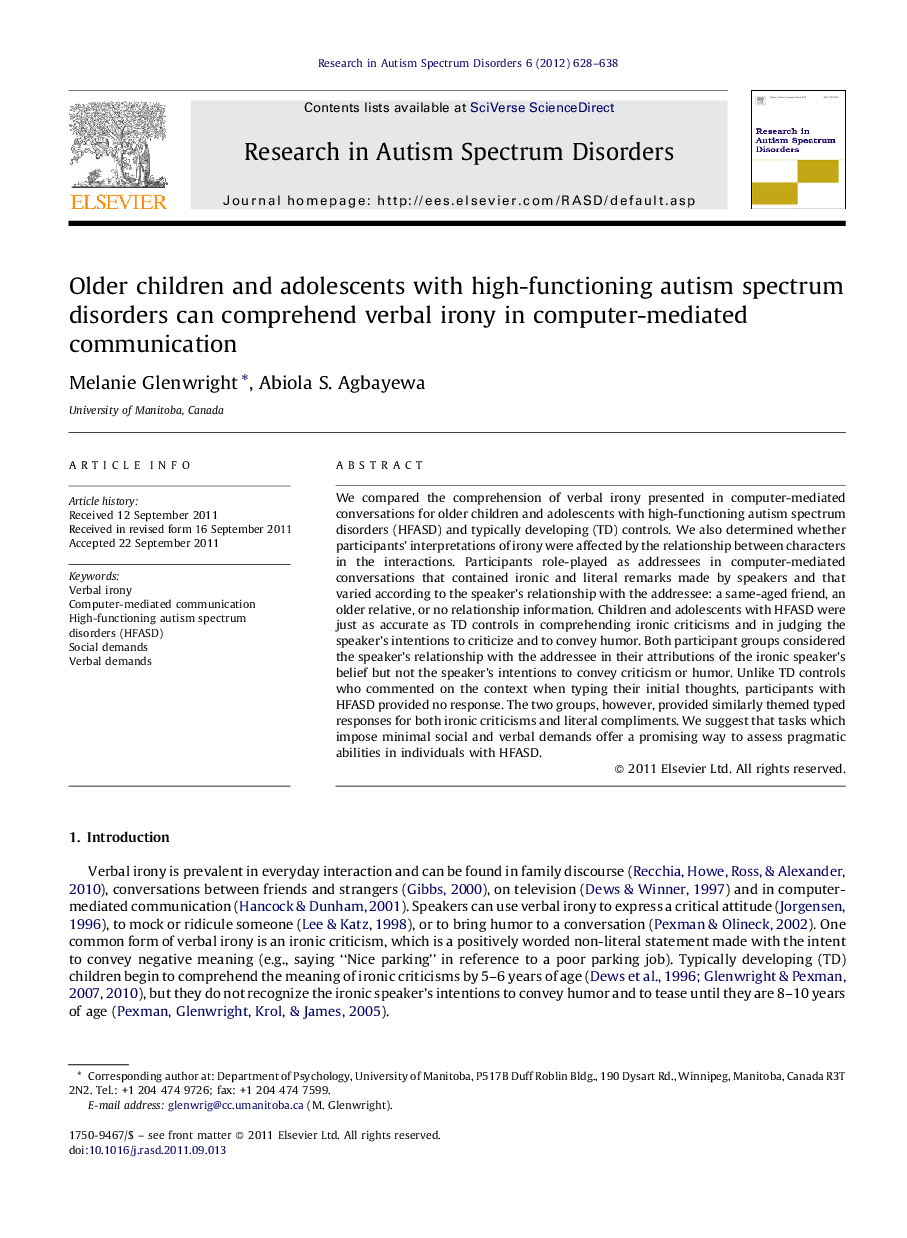| Article ID | Journal | Published Year | Pages | File Type |
|---|---|---|---|---|
| 370681 | Research in Autism Spectrum Disorders | 2012 | 11 Pages |
We compared the comprehension of verbal irony presented in computer-mediated conversations for older children and adolescents with high-functioning autism spectrum disorders (HFASD) and typically developing (TD) controls. We also determined whether participants’ interpretations of irony were affected by the relationship between characters in the interactions. Participants role-played as addressees in computer-mediated conversations that contained ironic and literal remarks made by speakers and that varied according to the speaker's relationship with the addressee: a same-aged friend, an older relative, or no relationship information. Children and adolescents with HFASD were just as accurate as TD controls in comprehending ironic criticisms and in judging the speaker's intentions to criticize and to convey humor. Both participant groups considered the speaker's relationship with the addressee in their attributions of the ironic speaker's belief but not the speaker's intentions to convey criticism or humor. Unlike TD controls who commented on the context when typing their initial thoughts, participants with HFASD provided no response. The two groups, however, provided similarly themed typed responses for both ironic criticisms and literal compliments. We suggest that tasks which impose minimal social and verbal demands offer a promising way to assess pragmatic abilities in individuals with HFASD.
► We compared verbal irony understanding in youth with HFASD and typical controls. ► We used a computer task with minimal demands on social skills. ► We also used forced choice questions with minimal demands on verbal skills. ► Irony comprehension for the HFASD group was just as accurate as the controls. ► Youth with HFASD can understand irony when social/verbal demands are minimized.
